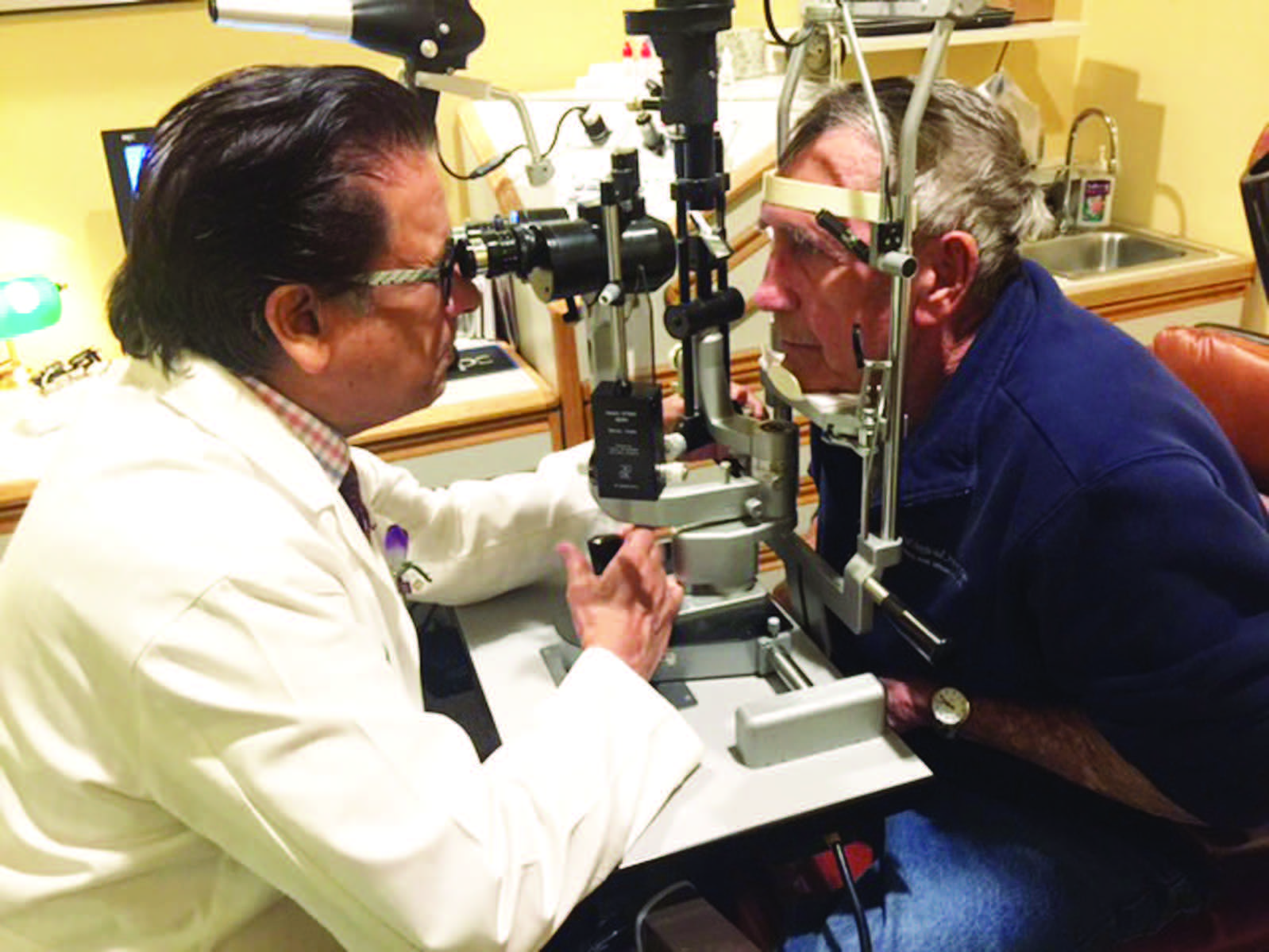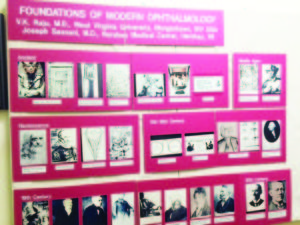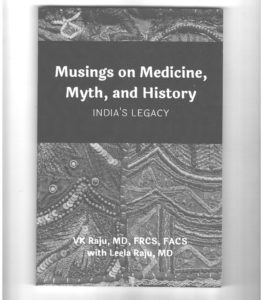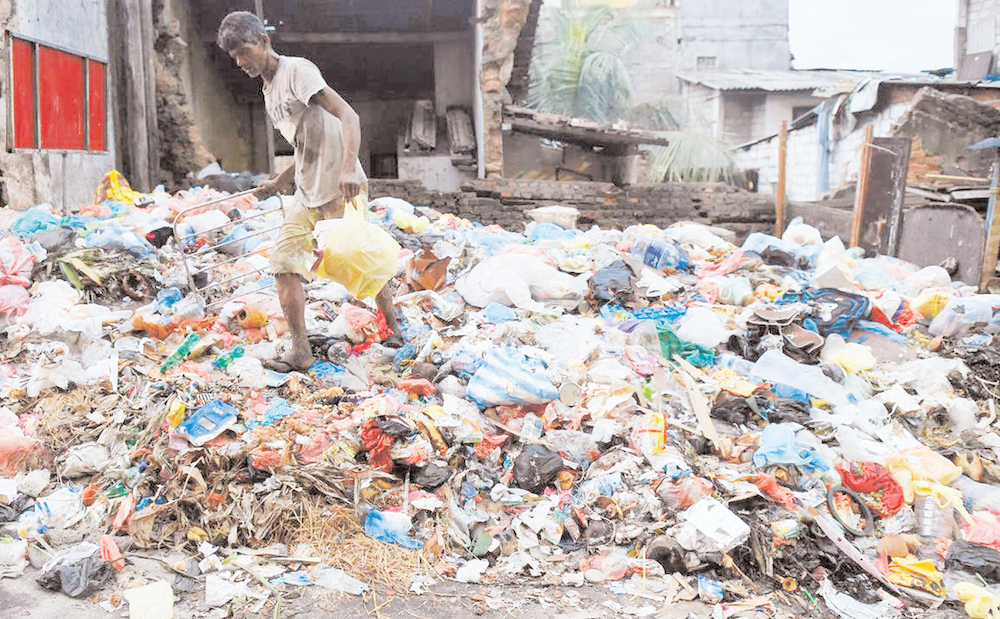
The inside walls of Dr. V. K. Raju’s eye clinic in this picturesque town of Morgantown in West Virginia are covered with a variety of historical facts about the history of eye treatment in the world. The exhibit not only informs the visitor about the need to protect one’s vision, but also educate about major developments in the field of eye surgery in Western countries as well as in India.

Dr. Raju moved to Morgantown almost forty years ago. “This is the place I settled down after moving to America”, he said. Morgantown is situated among the hills of West Virginia offering a wide variety of natural wonders just a few miles away from the urban society. As his practice thrived in this town, Dr. Raju continued to treat his patients with care and teach at the West Virginia University. All along his journey as an eye doctor, he remained deeply committed to helping people in India, who needed help for restoring their vision.
A native of Rajahmundry, India, Raju was educated in India, Great Britain, and the US. He serves as an adjunct clinical professor of ophthalmology at West Virginia University’s School of Medicine. “Many years ago, when I was visiting India, I met a villager who needed immediate surgery of his eyes. Unfortunately, I hadn’t carried my surgical equipment with me. I felt very sad for not being able to help him. Since then I realized the need to do much more for those who needed care for their eyes”, he recalled.
Dr. Raju continued to visit India where he volunteered his time conducting eye camps to provided free service to patients. In order to institutionalize his efforts he established the Eye Foundation of America in 1979. Today, the foundation has touched many lives in USA and in India. “The foundation has partnered with many organizations with similar goals in order to maximized its capabilities”, he told me.
Raju also helped found the Goutami Eye Institute in 2006, a fully equipped eye hospital in Rajahmundry, India, where a wing is dedicated to children’s eye problems. The Institute, also a teaching hospital, has trained 200 ophthalmologists, served 400,000 patients, and performed 50,000 surgeries since its operation.
“The medical facilities are still out of reach for poor people in India”, Dr. Raju said as he was discussing the ancient traditions of Ayurveda in India. “Even today, we hear news about people losing their visions due to after surgery complications. It is not because eye camps are not capable of treating patients with eye problem. We lack after care facilities for them”, he said.
Dr. Raju proudly talked about India’s golden age of surgery. Pointing to one of the exhibits on the wall depicting the tools used for surgeries during the ancient time of famed eye surgeon Susruta, he said, “RishiSusruta, who may be called the father of surgery due to his extensive work found in ‘Susruta-Samhita’, taught and promoted ophthalmology and cataract surgery in India way back in 600 BC. For hundreds of years India was a leader in medical practices. We have since lost most of our ancient traditions of medicine and surgery. It is sad that majorities of eye ailments have been successfully eradicated in the West while treatable eye problems leaves children blind for life”, he commented with a sad face.

In a recently released book, ‘Musings on Medicine, Myth, and History’, that Dr. Raju authored along with his physician daughter Leela, he wrote extensively on problems faced by children and poor people in India, ‘…three quarters of the world’s blind children live in developing countries, and about five hundred thousand become blind each year. In India alone such childhood blindness results in a four billion dollar economic loss.” (Page 82)
Dr. Raju told me that Goutami Eye Institute conducts workshops and other programs to teach its staff about new medical techniques and equipment. This program has been expanded to include physicians and medical practitioners from all over the world. Some workshops provide Continuing Medical Education (CME) credits. Fellowships available through Goutami Institute allow postgraduate physicians from India to further their education.Residents at the hospital are expected to participate in screenings during an eye camp for a day after which they examine outpatients with consultants in the clinics and gain hands-on experience with supervision in the operating room. The OR portion of this experience is geared toward 3rd year residents and 2nd year residents with previous experience in performing cataract surgery. First year residents will gain an exposure as assistants to the consultants.
Dr. Raju can be described as a human being who touches the heart of everyone. His long time technician EJ Clark, who has been working with him for the past 30 years comments about him, “The most important thing I like about Dr. Raju is the way he cares for the children of the world. He cares for everyone and treats his patients with equal care.”
“West Virginia is little bit like India”, Mr. Clark, who confidently said that she will retire when Dr. Raju will retire, commented about similarity among the people of West Virginia and India, “We are very friendly people. Some parts of the state is poor and need care, very much like those in India.”

Dr. Raju continued to elaborate upon his vision, also posted on the wall in his office, “There are three things people need, Education, education and education.” I laughed, “Can’t agree more with you, Doc!”, I said complimenting him for his untiring services for eradicating blindness among adults in general and children in particular.
As I lay down in bed in the night, I scrolled the pages of his book and stopped to read, “But if people around the world can remember the contributions to medicine that sages like Charaka and Susruta once made, perhaps they will be encouraged to lend their assistance to India-and India will finally enter another golden age of medicine and will once again be a world leader in the study and practice of medicine.” (Page 84)
Can’t agree more with you, Doc!





Be the first to comment